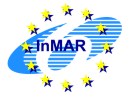InMAR

Intelligent Materials for Active Noise Reduction
Nowadays, noise is recognized as one of the major pollutants worldwide. Noise creates more than an estimated 10 billion euro in costs annually, because it is not only annoying, but also causes illnesses. Throughout Europe, there are more than 100 million people affected by noise pollution. The health impacts of noise are diverse: from learning disabilities in children, stress, and loss of hearing to an increased risk of heart attacks. This problem has been picked up on national and European levels through a multitude of activities. The goal is to significantly reduce noise pollution within the next 10 – 20 years.
Within the European InMAR project – Intelligent Materials for Active Noise Reduction – the suitability of functional materials and the performance of active structural systems for noise reduction was investigated. In order to reduce the vibrations, researchers link the sensing and actuating functions of the materials with electronic controllers. Sensors and actuators can systematically react to operating conditions: depending on the vibration frequency, inverted soundwaves are introduced. This reduces the propagation of the sound waves by actively damping the source of the noise. Thereby the mechanical properties, like the damping behaviour or the stiffness per software, can be adjusted. Thus, vibrations can be lowered, noise can be reduced, and the contour of structures can be controlled with functional materials.
The international consortium, coordinated by the Fraunhofer LBF, was composed of 42 notable institutions (11 universities, 8 research institutions, 8 KMUs and 15 industrial partners) from 13 European countries. This project was coordinated by the former head of the institute, Prof. Holger Hanselka, and Prof. Thilo Bein. It comprised a project scope of 34 million euro. Overall, the consortium invested 15 million euro (50 % of the F&E budget) of its own funds in this research project.
To illustrate the project results, various demonstrations with intelligent materials were designed in the InMAR project. Examples of the 23 projects in the fields of automobiles, railcars, and infrastructures are:
- A car engine mount that actively reduces the transfer of vibrations to the chassis by means of intelligent materials. The significant transfer paths and directions of the structure-borne sound are identified through structural dynamic measurements in a frequency range from 0 to 250 Hz. From this data, different concepts of the active interventions have been investigated with help of simulation calculations.
- An active harmonic absorber that reduces the vibrations of the compressor in a tram’s AC unit. Here, a passive mass-spring-system (a spiral spring) is used to reduce these vibrations within a specific frequency range. Additional vibrations from glued piezo-patches can be introduced into the original passive absorber that will change the absorber’s natural frequency in a range from -12 bis + 3 Hz.
- A soundproof window that keeps out low frequencies, e.g. airplane noise or bass from clubs. The window can lower test signals in a frequency range between 50 and 1000 Hz to about 6 decibels – the sound on the other side of the window is still only half as loud. The sound level of individual test signals can even be reduced by up to 15 decibels.
This project successfully brought all of the European top-level-research in the field of active systems together and created a counterbalance to the activities in the USA and Asia.
Further informations:
InMAR
Contact:
Prof. Dr.-Ing. Thilo Bein


